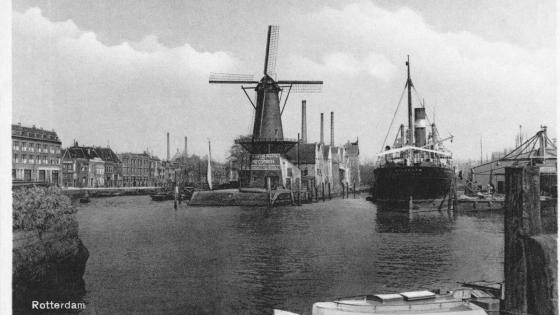Since the 1988 Cecchini report, there have been many attempts at quantifying gains from trade in the EU. Compared with the state of the art in international trade theory, the main limitation of that literature is its neglect of firm heterogeneity, which implies that only scale economies drive endogenous changes in productivity within sectors. In recent models with heterogeneous firms trade liberalisation has, instead, an additional positive impact on sectoral productivity through the selection of the most efficient firms (Bernard et al. 2003, Melitz 2003).
The reason is a combination of import competition and export market access. On the one hand, as lower trade costs allow foreign producers to target the domestic markets, the operating profits of domestic firms in those markets shrink whatever their productivities. On the other hand, some domestic firms gain access to foreign markets and get additional profits from their foreign ventures. These are the firms that are productive enough to cope with the additional costs of foreign activity (such as those due to transportation and remaining administrative duties or institutional and cultural barriers).
The result is the partition of the initially active domestic firms in three groups. As they start making losses in their home markets without gaining access to foreign markets, the least productive firms are forced to exit. The most productive firms, meanwhile, are able to compensate lost profits on home sales with new profits on foreign sales and so can survive and expand their market shares. Finally, firms with intermediate levels of productivity also survive but, not being productive enough to access foreign markets, are relegated to home sales only and their market shares fall. Since international trade integration eliminates the least productive firms, average productivity grows through the reallocation of productive resources from less to more efficient producers.
This mechanism found empirical support in firm-level analyses that tried to identify the direction of causation hidden in the positive correlation between the export status of a firm and its productivity (called ‘exceptional exporter performance' by Bernard and Jensen 1999). The empirical relevance of the selection effect motivates additional efforts towards quantifying the corresponding gains from trade. This line of research has been heralded by Tybout (2003) and pursued by Bernard et al. (2003). The counterfactual analysis by Bernard et al (2003) has the merit of showing for the first time how to provide a quantitative assessment of the selection effect of trade liberalisation in the spirit of computable equilibrium models. It neglects, however, a few important dimensions of the effects of trade policy highlighted by both theoretical and empirical research:
- First, in the model of Bernard et al. (2003) the equilibrium distribution of firm markups is invariant to country characteristics and to geographic barriers. This removes an important source of cross-country variation in the selection effects and is not consistent with empirical evidence showing that mark-ups do vary across firms and markets (Tybout 2003).
- Second, Bernard et al. (2003) assume that firms' entry does not respond to market profitability. This removes an important channel through which industry equilibrium is eventually restored and gives the model a strong short-run flavour.
To overcome these limitations, in recent research (Corcos et al. 2012) we estimate and simulate a model derived from Melitz and Ottaviano (2008). This model accounts for a number of real world effects of trade liberalisation: richer availability of product varieties; tougher competition and weaker market power of firms; better exploitation of economies of scale; and, of course, efficiency gains via the selection of the most efficient firms. The model is estimated on EU data and simulated in counterfactual scenarios that target several dimensions of European integration.
Our simulations reveal substantial productivity gains from selection. In one experiment that consists in undoing EU trade integration, we find that the average EU country experiences a 7.02% permanent productivity loss, with a 3.02% aggregate loss for the EU15. Productivity gains stemming from EU integration also translate into lower prices, lower mark-ups, and richer product variety. There again, the effects are far from being marginal. Decreases in prices and mark-ups are of the same magnitude as productivity increases. Profits, in turn, decrease by 6.57% on average.
Remarkably, gains from freer trade are unevenly distributed between and within countries, according to size and geography. Small and peripheral countries are those that benefit the most. For instance, Ireland would experience a 12.59% productivity loss from undoing EU integration, whereas larger and more central countries such as the UK and Germany would experience 0.55% and 1.37% productivity losses, respectively. Interestingly, trade partners of the EU would gain from undoing EU integration, as higher prices allow a greater number of non-European firms to serve European markets.
In another experiment, we examine the relative importance of within-country trade costs with respect to international trade costs. We find that reducing trade costs between European countries has a greater effect on productivity than reducing trade costs within a large European country such as France. For instance a 5% reduction in the cost of international trade leads to an aggregate 4.15% productivity gain for France, while a 5% reduction in the cost of trading within France leads to an aggregate gain of 1.41%. Again, these gains are from being evenly distributed. Perhaps unsurprisingly, border regions benefit more from international trade cost reductions, while central regions benefit more from intra-national trade cost reduction. As with countries, the gains vary substantially: 4.84% in the case of the Centre region against 17.25% in the case of Alsace (bordering Germany and Switzerland).
Overall, our results suggest that traditional trade policy evaluations tools may have overlooked a quantitatively important channel for the gains from trade.
References
Bernard, A and B Jensen (1999), “Exceptional Exporter Performance: Cause, Effect, or Both?”, Journal of International Economics, 47:1-25.
Bernard, A, J Eaton, J Jensen, and S Kortum (2003), “Plants and Productivity in International Trade”, American Economic Review, 93:1268-1290.
Corcos, G, M Del Gatto, G Mion, G Ottaviano (2012), “Productivity and Firm Selection: Quantifying the ‘New’ Gains from Trade”, Economic Journal, 122(561):754-798.
Melitz, M (2003), “The Impact of Trade on Intra-Industry Reallocations and Aggregate Industry Productivity”, Econometrica, 71:1695-1725.
Melitz, M and G Ottaviano (2008), “Market size, trade and productivity”, Review of Economic Studies, 75:295-313.
Tybout, J (2003), “Plant and Firm-Level Evidence on New Trade Theories”, in J Harrigan (ed.), Handbook of International Economics, 38, Basil-Blackwell.




